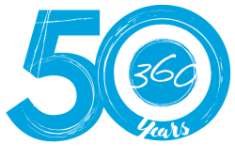By: JAKE LEVINSON (he/they) PREVENTION FIRST
360 Youth Services
After witnessing a sequence of racially motivated tragedies and the cost of systemic racial bias, 360 Youth Services decided to conduct an internal audit. They identified a gap in the delivery of their services which motivated the development of a comprehensive guide for delivering prevention services focusing on equity, “Overcoming Racial Bias in Prevention.”
“We recognize that racism is an issue. It’s not easy to talk about. It is part of our work. It’s important for us to recognize our biases so that we can better serve who we’re serving.”
Terra Rumer, Power of Choice Campaign 6th-8th Grade Coordinator,
360 Youth Services
During the summer of 2020, motivated by the fates of George Floyd, Breonna Taylor and others, the substance use prevention team at 360 Youth Services took pause and reflected on the needs. They recognized that they could better serve their community and youth by confronting racism and examining best practices for establishing racial equity policies. Acknowledging that biases could affect the way they delivered services, they determined that they needed to know how to overcome this to serve diverse communities and youth better.
Steps to a Solution
The substance use prevention team at 360 began a year-long process of developing what ultimately became the guidelines. In June 2020, after researching whether similar tools existed and not finding any that fit their
specific needs, 360 began internal meetings with staff across the agency to address inclusion, diversity, and racial equity. Their agency started this process with the whole community in mind, acknowledging that addressing racial equity would cut across all sectors, especially youth of color and LGBTQ+ youth. To establish a productive working group, they devoted a significant amount of time building trust in the process. They cultivated an effective working group that welcomed honest and constructive ideas and feedback. Through a combination of team meetings, one-on-one meetings, and individual and group feedback from the whole group, the team developed the guidelines within a year.
Results
360 has applied the guidelines for racial equity in numerous areas. Youth Advisory Committee members used the guidelines to revise materials through a racial equity lens and intentionally engaged a more diverse committee membership, examining race, gender expression, gender identity, orientation, ability, and socio-economic experience. The communication campaign (Power of Choice) committee collaborated with diverse parent groups to obtain feedback and help disseminate materials to ensure a broader reach. Materials
developed locally began to reflect more representative imagery. The team shared information from the process with their local coalition to include in the health disparities section of their Drug-Free Communities Grant application. For their Operation Snowball youth leadership program, they have observed an increase in youth leadership by youth of color.
The Prevention team has expressed that with this ongoing process, they feel they are more likely to communicate messages that resonate with historically underserved populations, reinforcing and building
protective factors that fit lived experiences of their marginalized youth and families.
Sustaining Success
While the guidelines have been created, the work is not complete. The team continues to meet on this topic, and the agency has established a culture team that includes someone from each department of the agency and meets regularly. Staff view the guidelines as a living, breathing document that is returned to on at
least a quarterly basis.
Moving forward, the 360 staff encourages others working in prevention to utilize the guidelines or similar guidelines in their own work, and share any additional ideas, lessons learned, and experiences. Their team acknowledges that others who engage in these efforts can expect uncomfortable conversations, but they
also stress that beginning the dialogue and the work is vital. 360 welcomes other agencies to borrow from their work by adapting as much of the guidelines as appropriate.
“Underage substance use intersects with mental health, so it makes sense that youth substance use intersects with social injustice and racial inequities.”
Janyce Hamilton, Power of Choice Campaign High
School Coordinator, 360 Youth Services

